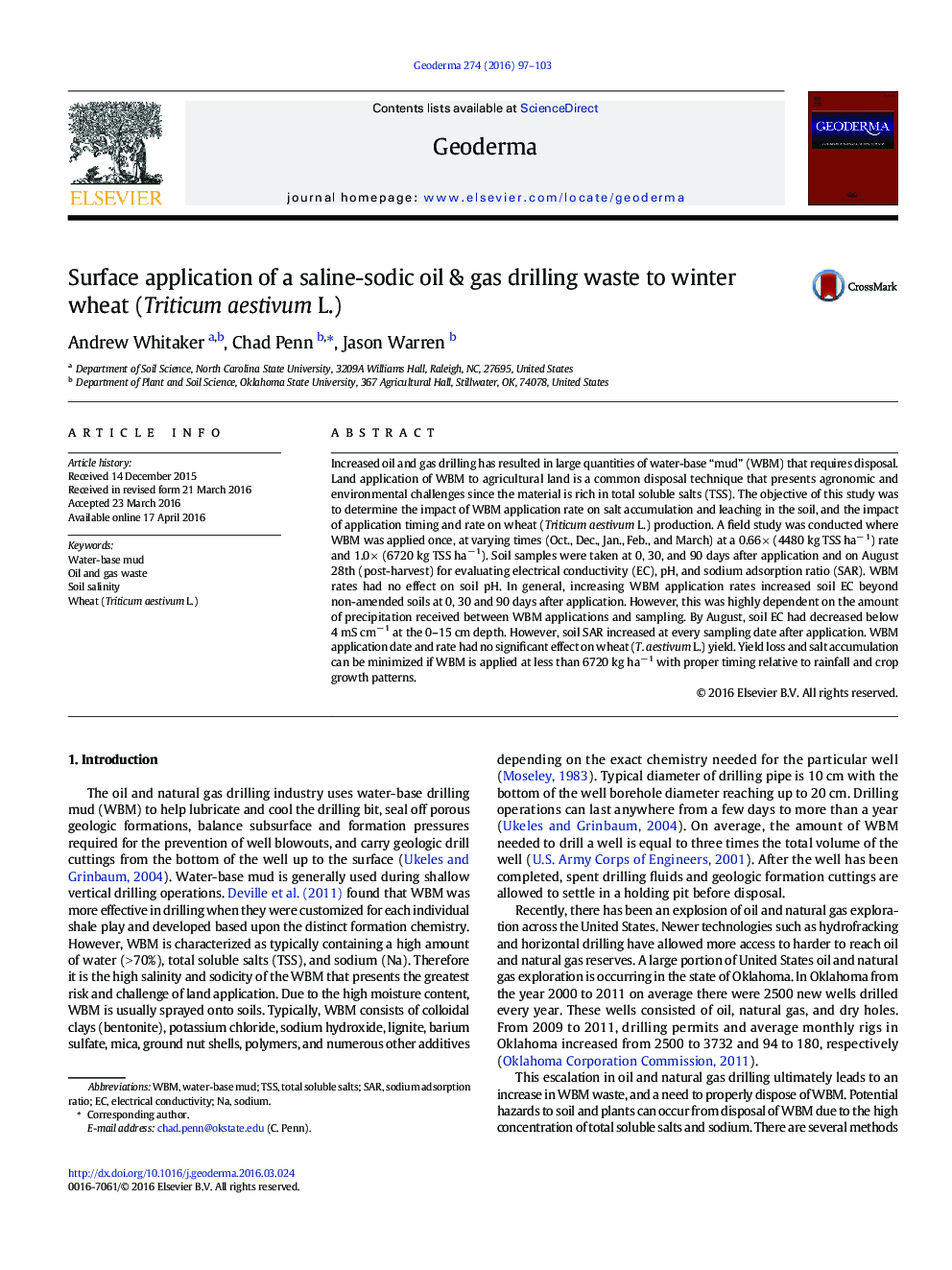| کد مقاله | کد نشریه | سال انتشار | مقاله انگلیسی | نسخه تمام متن |
|---|---|---|---|---|
| 4572921 | 1629443 | 2016 | 7 صفحه PDF | دانلود رایگان |
• Characterized and applied sodic water-base mud (WBM) to winter wheat
• Applied at 0, 4480, and 6720 kg total soluble salts (TSS) ha− 1
• Single application in Oct., Dec., Jan., Feb., and Mar.
• Salt leached out of root zone as a function of cumulative rainfall
• No significant decrease in wheat yield
Increased oil and gas drilling has resulted in large quantities of water-base “mud” (WBM) that requires disposal. Land application of WBM to agricultural land is a common disposal technique that presents agronomic and environmental challenges since the material is rich in total soluble salts (TSS). The objective of this study was to determine the impact of WBM application rate on salt accumulation and leaching in the soil, and the impact of application timing and rate on wheat (Triticum aestivum L.) production. A field study was conducted where WBM was applied once, at varying times (Oct., Dec., Jan., Feb., and March) at a 0.66 × (4480 kg TSS ha− 1) rate and 1.0 × (6720 kg TSS ha− 1). Soil samples were taken at 0, 30, and 90 days after application and on August 28th (post-harvest) for evaluating electrical conductivity (EC), pH, and sodium adsorption ratio (SAR). WBM rates had no effect on soil pH. In general, increasing WBM application rates increased soil EC beyond non-amended soils at 0, 30 and 90 days after application. However, this was highly dependent on the amount of precipitation received between WBM applications and sampling. By August, soil EC had decreased below 4 mS cm− 1 at the 0–15 cm depth. However, soil SAR increased at every sampling date after application. WBM application date and rate had no significant effect on wheat (T. aestivum L.) yield. Yield loss and salt accumulation can be minimized if WBM is applied at less than 6720 kg ha− 1 with proper timing relative to rainfall and crop growth patterns.
Figure optionsDownload as PowerPoint slide
Journal: Geoderma - Volume 274, 15 July 2016, Pages 97–103
